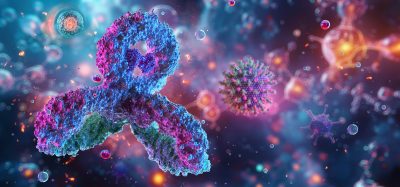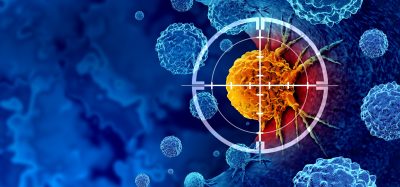Promising target for osteoporosis treatments found in new study
Posted: 10 February 2022 | Ria Kakkad (Drug Target Review) | No comments yet
By identifying a mechanism behind bone strengthening in response to stress, researchers have found a possible new target for treating conditions that weaken bones.


A study published in eLife shows that channels on the surface of bone cells called osteocytes can help build stronger bones in response to mechanical stress. This may help scientists to develop new therapeutics to conditions that contribute to bone loss, such as osteoporosis.
Osteocytes make up 90 to 95 percent of all bone cells and help to detect mechanical stress on the bone. They then regulate the breakdown of weakened bone by cells called osteoclasts and the build-up of new bone by cells called osteoblasts. The researchers found that mechanical stimulation, such as physical exercise, is key in bone formation and therefore stimulate new bone growth.
“Previous research has shown that mechanical stress on bones increases the number of channels on the surface of osteocytes, called connexin (Cx) 43 hemichannels,” explained first author Dezhi Zhao, a visiting PhD student at the University of Texas Health Science Centre at San Antonio, Texas, US. “In this study, we wanted to examine the role that these channels play in responding to mechanical stress on bones.”
The research team studied different types of mouse models; in one, the connections between the bone cells, called gap junctions, were impaired but Cx43 hemichannels were strengthened. In the other, both gap junctions and Cx43 hemichannels were impaired. The team then tested what happened to the bones of these mice and typical mice when exposed to mechanical stress. They found that prostaglandin (PGE2) was produced in both the typical mice and the gap junction-impaired mice in response to mechanical stress and their bones became stronger. However, this response was not shown in the Cx43 hemichannel-impaired mice.
To further support that Cx43 hemichannels are vital to strengthening bones, the researchers gave typical mice an antibody that blocks Cx43 hemichannel activity. This stopped the animals from producing PGE2 and reduced bone strengthening in response to mechanical stress — but treating the same mice with PGE2 restored the bone strengthening effects of this stress.
According to the scientists, this research suggests that targeting Cx43 hemichannels on osteocytes might be an alternative treatment that uses the body’s own response to stress. Existing treatments for osteoporosis usually target osteoclasts that break down weakened bone and work by reducing bone turnover. This can unintentionally lead to more damaged bones over time and has been linked with some rare, serious side effects.
“Our work highlights Cx43 hemichannels as a potential new target for medications to treat osteoporosis and other conditions that cause bone loss,” concluded senior author Professor Jean Jiang, Zachry Distinguished University Chair, Department of Biochemistry and Structural Biology, UT Health Science Centre at San Antonio. “Further studies are needed to verify these findings and explore the potential of drugs that target these channels. If they are one day proven to be safe and effective, such treatments could be particularly helpful for older patients who are less responsive to the bone-strengthening effects of movement.”
Related topics
Drug Targets, Molecular Targets, Target Validation, Therapeutics
Related conditions
Osteoporosis
Related organisations
University of Texas Health Science Centre, UT Health Science Centre at San Antonio
Related people
Dezhi Zhao, Professor Jean Jiang








